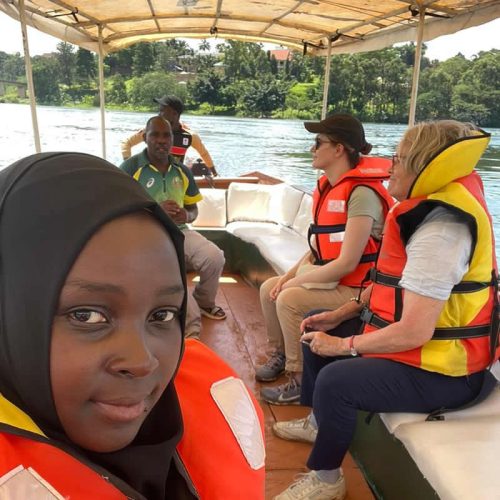Located in the southern part of Uganda, Lake Mburo National Park spans an area of 260 square kilometers. The park is named after the prominent Lake Mburo, which lies within its boundaries. Lake Mburo National Park is notable for its unique range of fauna, some of which are not easily found elsewhere in Uganda. Highlights include zebras, common duikers, impalas, Bohor reedbucks, buffaloes, and a variety of bird species. Notably, Lake Mburo is the only place in Uganda where you can see the impressive eland antelope, as well as zebra, topi, and impala. The park is also home to acacia-associated birds and has a special swamp interior habitat for the sitatunga antelope and rocky areas where the klipspringer may occasionally be observed. Additionally, only two diurnal primates are found here: the vervet monkey and the olive baboon.
Accessibility
The park is accessible by road, with a drive from Kampala taking approximately 3.5 hours along the Mbarara-Kampala highway.
Birding
 Lake Mburo National Park is a birdwatcher’s paradise, boasting a variety of bird species from wetland, savanna, and forest habitats. First-time visitors are often thrilled by the park’s colorful avifauna. In the Rabongo Forest, five bird species are exclusive to the area, while the park’s swamps, lakes, and wetlands host over 60 specialist water birds. Bird enthusiasts should remember to bring their birding equipment to fully appreciate the park’s avian diversity.
Lake Mburo National Park is a birdwatcher’s paradise, boasting a variety of bird species from wetland, savanna, and forest habitats. First-time visitors are often thrilled by the park’s colorful avifauna. In the Rabongo Forest, five bird species are exclusive to the area, while the park’s swamps, lakes, and wetlands host over 60 specialist water birds. Bird enthusiasts should remember to bring their birding equipment to fully appreciate the park’s avian diversity.
Bird Species
The park is home to 313 bird species, including rare sightings such as the shoebill stork, white-winged warblers, black-billed barbet, crested francolin, brown parrot, red-necked spur, emerald-spotted wood dove, temminck’s courser, common quail, greenwood hoopoe, blue-naped mousebird, barefaced go-away bird, African grey hornbill, Nubian woodpecker, trilling cisticola, lilac-breasted roller, coqui francolin, black-bellied bustard, African-wattled plover, rufous-napped and flappet larks, rufous-chested swallow, southern red bishop, and yellow-throated longclaw, among others. The park’s fringing swamps also conceal elusive papyrus specialists like the red, black, and yellow papyrus gonalek.
Lake Mburo and Other Lakes
The park’s lakes, including Lake Mburo and four others, attract hippos, crocodiles, and a variety of water birds. These lakes provide excellent opportunities for recreational activities such as swimming, boat riding, and sport fishing.
Game Viewing
Game drives are a major tourist activity in the park, offering opportunities to view the park’s rich biodiversity. With approximately 68 different mammal species, visitors can expect to see zebras, impalas, buffaloes, topis, elands, roan antelopes, leopards, hyenas, and jackals, among others.
Guided Foot Safaris
The park features various nature trails for guided foot safaris, allowing visitors to explore different parts of the park on foot while enjoying the scenery and wildlife. These safaris are led by armed guides to ensure safety.
Forest Walks
Organized in Rubanga Forest, these walks offer a chance to experience diverse tree species and over 40 bird species recorded in the forest.
Boat Trips
 Boat trips on Lake Mburo provide a unique perspective on the park’s wildlife and plant life. During these trips, you may spot crocodiles, hippopotamuses, and birds such as cormorants, black crakes, herons, pelicans, and fish eagles.
Boat trips on Lake Mburo provide a unique perspective on the park’s wildlife and plant life. During these trips, you may spot crocodiles, hippopotamuses, and birds such as cormorants, black crakes, herons, pelicans, and fish eagles.
Fishing
With five lakes in the park, fishing is a popular activity. Lake Mburo, in particular, offers the chance to catch various fish species, including tilapia, lung fish, mud fish, and haplochromes.
Salt Lick
One of the park’s most intriguing features is the salt lick. From a wooden platform, visitors can observe up to four different animal species simultaneously as they lick the salty soil. The platform serves as a hideaway, allowing for close-up views without disturbing the animals.
Lake Mburo National Park offers a rich blend of wildlife, birding, and recreational activities, making it a unique destination in Uganda’s diverse landscape.

